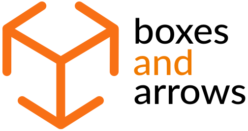Designers often dismiss deep consideration of content. Chris Detzi shows how this affects project implementation and helps us
create experiences that hold
content more effectively.
Category: Visual and Visible
Photos for interaction
Visual design of software interfaces is becoming increasingly complex due to more possibilities and fewer platform standards. Milan Guenther introduces how to support interaction with the visible part of software, using photography as an example.
Continue readingCues, The Golden Retriever
Jamie Owen explores how we can best utilize cues in our work by understanding how memory, cognitive psychology, and multimedia research affect how information is encoded and retrieved.
Continue readingEnhancing Dashboard Value and User Experience
In this article, part five of a series, the author describes ways to enhance the long-term value and user experience quality of portals by encouraging portability and natural patterns of dialog and interaction around aggregated content.
Continue readingUsing Design Visuals To Communicate Ideas
Jeff Parks talks to a few of the very talented folks from VizThink ’08.
Continue reading